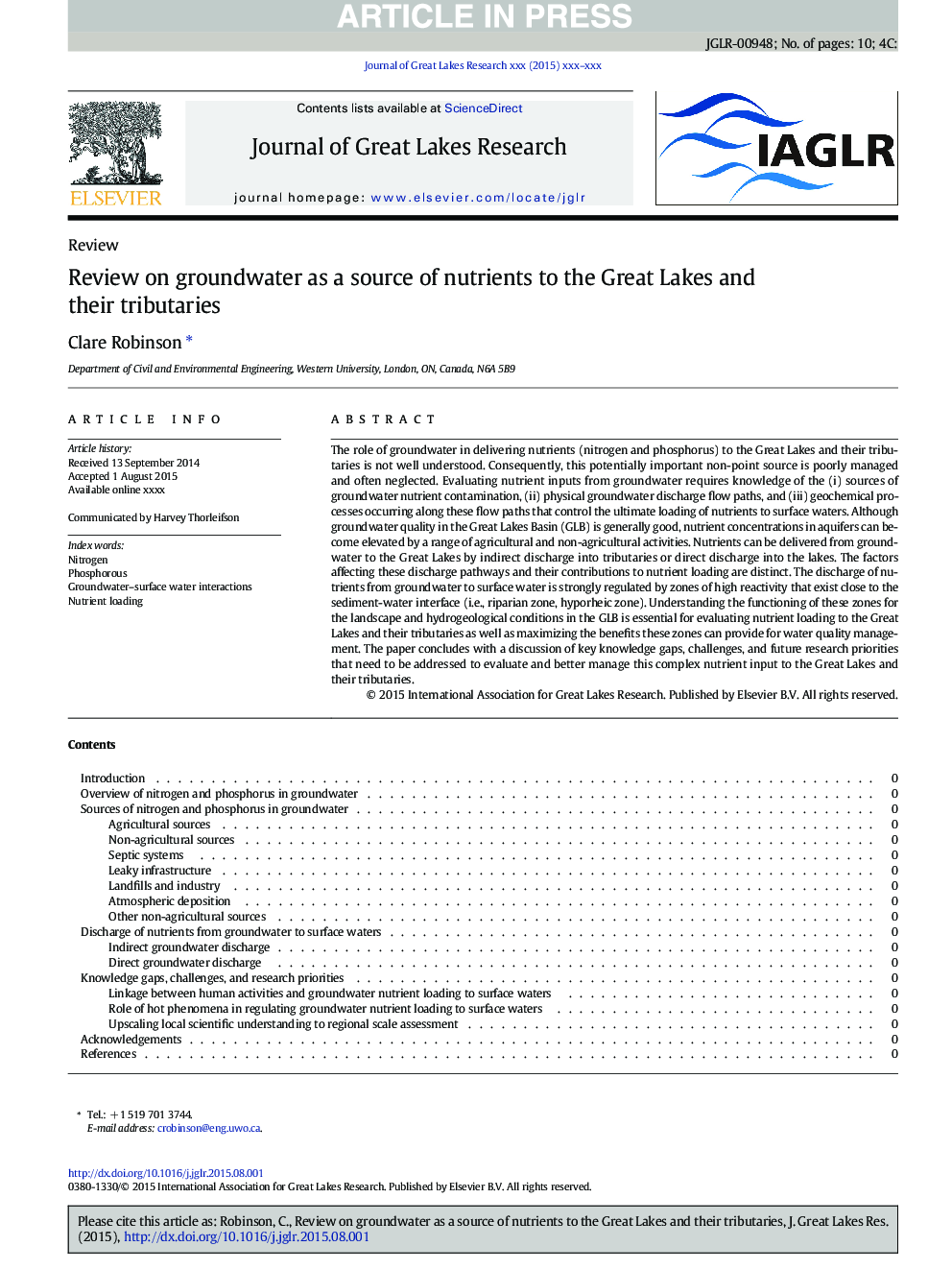| Article ID | Journal | Published Year | Pages | File Type |
|---|---|---|---|---|
| 6304825 | Journal of Great Lakes Research | 2015 | 10 Pages |
Abstract
The role of groundwater in delivering nutrients (nitrogen and phosphorus) to the Great Lakes and their tributaries is not well understood. Consequently, this potentially important non-point source is poorly managed and often neglected. Evaluating nutrient inputs from groundwater requires knowledge of the (i) sources of groundwater nutrient contamination, (ii) physical groundwater discharge flow paths, and (iii) geochemical processes occurring along these flow paths that control the ultimate loading of nutrients to surface waters. Although groundwater quality in the Great Lakes Basin (GLB) is generally good, nutrient concentrations in aquifers can become elevated by a range of agricultural and non-agricultural activities. Nutrients can be delivered from groundwater to the Great Lakes by indirect discharge into tributaries or direct discharge into the lakes. The factors affecting these discharge pathways and their contributions to nutrient loading are distinct. The discharge of nutrients from groundwater to surface water is strongly regulated by zones of high reactivity that exist close to the sediment-water interface (i.e., riparian zone, hyporheic zone). Understanding the functioning of these zones for the landscape and hydrogeological conditions in the GLB is essential for evaluating nutrient loading to the Great Lakes and their tributaries as well as maximizing the benefits these zones can provide for water quality management. The paper concludes with a discussion of key knowledge gaps, challenges, and future research priorities that need to be addressed to evaluate and better manage this complex nutrient input to the Great Lakes and their tributaries.
Related Topics
Physical Sciences and Engineering
Earth and Planetary Sciences
Earth and Planetary Sciences (General)
Authors
Clare Robinson,
